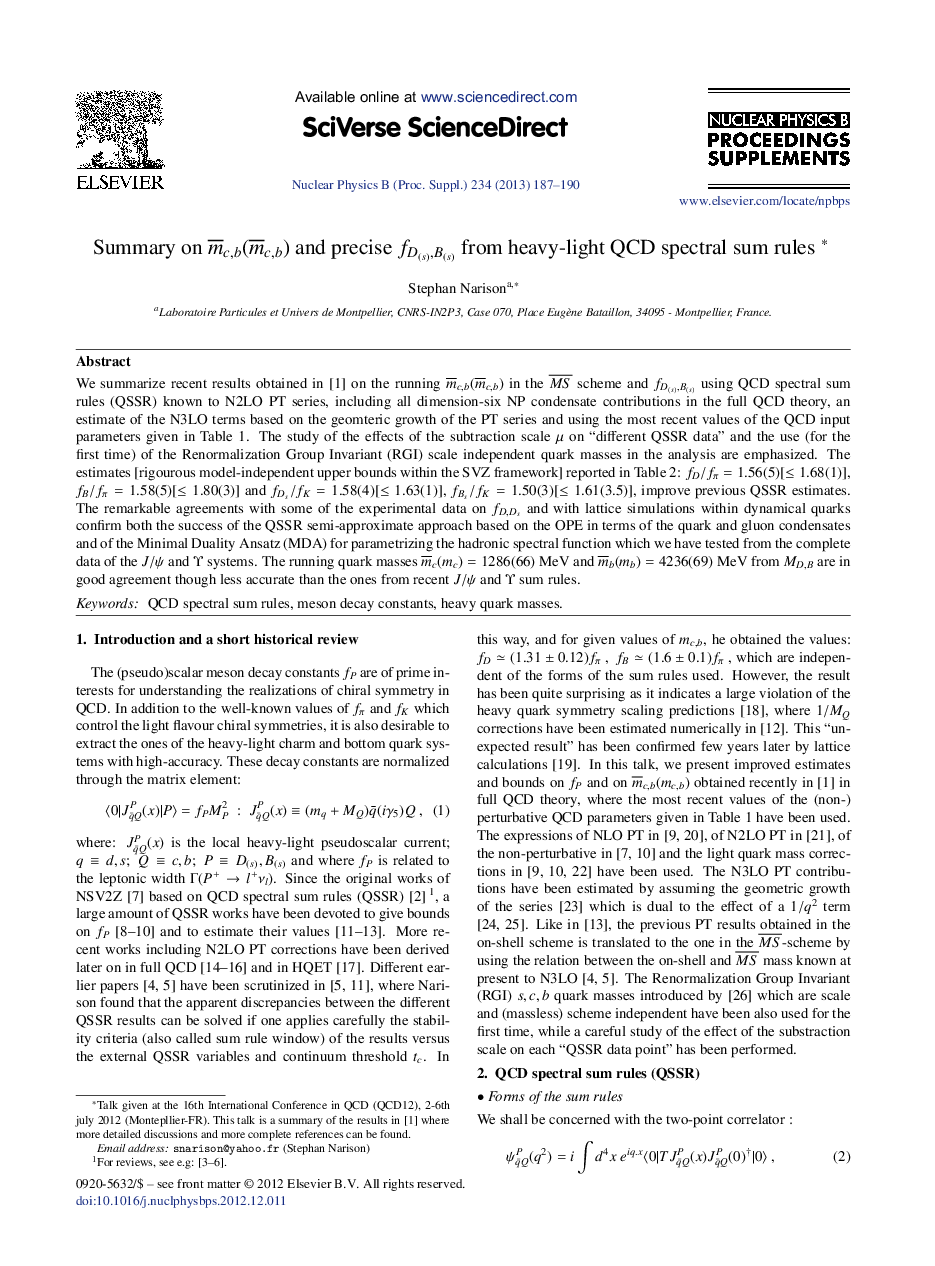| Article ID | Journal | Published Year | Pages | File Type |
|---|---|---|---|---|
| 8185493 | Nuclear Physics B - Proceedings Supplements | 2013 | 4 Pages |
Abstract
We summarize recent results obtained in [S. Narison, arXiv:1209.2023 (2012).] on the running m¯c,b(m¯c,b) in the MS¯ scheme and fD(s),B(s) using QCD spectral sum rules (QSSR) known to N2LO PT series, including all dimension-six NP condensate contributions in the full QCD theory, an estimate of the N3LO terms based on the geomteric growth of the PT series and using the most recent values of the QCD input parameters given in Table 1. The study of the effects of the subtraction scale μ on “different QSSR data” and the use (for the first time) of the Renormalization Group Invariant (RGI) scale independent quark masses in the analysis are emphasized. The estimates [rigourous model-independent upper bounds within the SVZ framework] reported in Table 2: fD/fÏ=1.56(5)[⩽1.68(1)], fB/fÏ=1.58(5)[⩽1.80(3)] and fDs/fK=1.58(4)[⩽1.63(1)], fBs/fK=1.50(3)[⩽1.61(3.5)], improve previous QSSR estimates. The remarkable agreements with some of the experimental data on fD,Ds and with lattice simulations within dynamical quarks confirm both the success of the QSSR semi-approximate approach based on the OPE in terms of the quark and gluon condensates and of the Minimal Duality Ansatz (MDA) for parametrizing the hadronic spectral function which we have tested from the complete data of the J/Ï and Ï systems. The running quark masses m¯c(mc)=1286(66)MeV and m¯b(mb)=4236(69)MeV from MD,B are in good agreement though less accurate than the ones from recent J/Ï and Ï sum rules.
Related Topics
Physical Sciences and Engineering
Physics and Astronomy
Nuclear and High Energy Physics
Authors
Stephan Narison,
